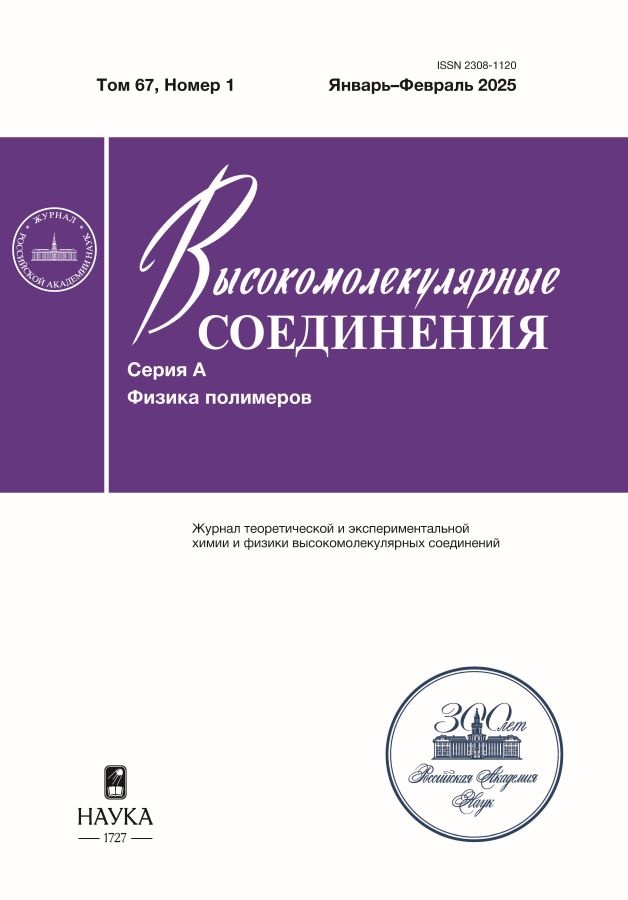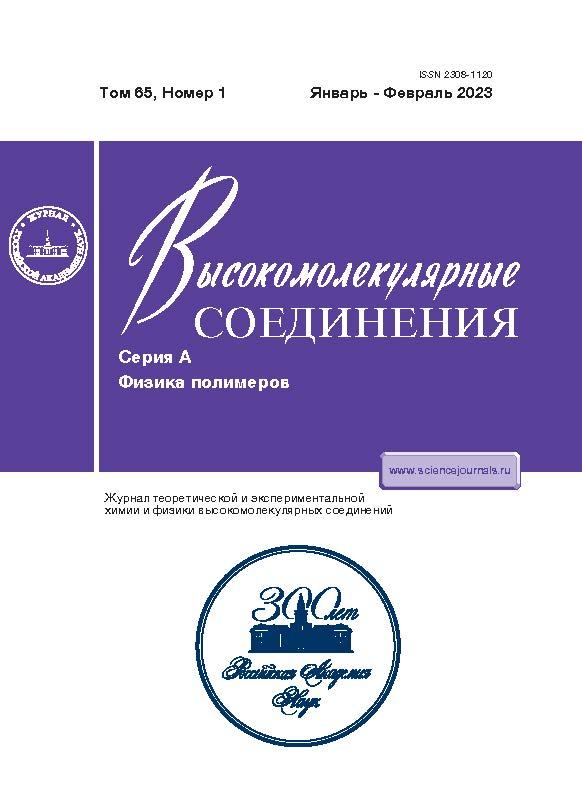ЭПР-ИССЛЕДОВАНИЕ ВЗАИМОДЕЙСТВИЯ ПРЕКУРСОРОВ НАНОЧАСТИЦ МЕДИ С ПОЛИЭТИЛЕНИМИНОМ
- Авторы: Мотякин М.В.1,2, Озерин А.С.3, Ионова И.С.1, Радченко Ф.С.3, Новаков И.А.3
-
Учреждения:
- Федеральный исследовательский центр химической физики им. Н.Н. Семенова Российской академии наук
- Институт биохимической физики им. Н.М. Эмануэля Российской академии наук
- Волгоградский государственный технический университет
- Выпуск: Том 65, № 1 (2023)
- Страницы: 50-53
- Раздел: ПОЛИЭЛЕКТРОЛИТЫ
- URL: https://journals.rcsi.science/2308-1120/article/view/135336
- DOI: https://doi.org/10.31857/S2308112023700372
- EDN: https://elibrary.ru/VAIZAH
- ID: 135336
Цитировать
Полный текст
Аннотация
Методом ЭПР-спектроскопии исследован процесс компексообразования полиэтиленимина с катионами меди в водном растворе с последующим выделением наночастиц меди. Показано, что в избытке полимера в растворе катион меди образует комплекс с тремя атомами азота в координационной сфере и искаженной тетрагональной геометрией. При увеличении концентрации меди начинает формироваться комплекс катиона меди с водой. Добавление в исследованные растворы восстановителя NaBH4 приводит к образованию частиц Cu(0), вызывает постепенное исчезновение ЭПР-сигнала Cu(II) и возникает сигнал ЭПР, характерный для моноядерных комплексов меди с полиэтиленимином.
Об авторах
М. В. Мотякин
Федеральный исследовательский центр химической физики им. Н.Н. Семенова Российской академии наук; Институт биохимической физики им. Н.М. Эмануэля Российской академии наук
Email: asozerin@vstu.ru
Россия, 119991, Москва, ул. Косыгина, 4; Россия, 119334, Москва, ул. Косыгина, 4
А. С. Озерин
Волгоградский государственный технический университет
Email: asozerin@vstu.ru
Россия, 400005, Волгоград, пр. им. В.И. Ленина, 28
И. С. Ионова
Федеральный исследовательский центр химической физики им. Н.Н. Семенова Российской академии наук
Email: asozerin@vstu.ru
Россия, 119991, Москва, ул. Косыгина, 4
Ф. С. Радченко
Волгоградский государственный технический университет
Email: asozerin@vstu.ru
Россия, 400005, Волгоград, пр. им. В.И. Ленина, 28
И. А. Новаков
Волгоградский государственный технический университет
Автор, ответственный за переписку.
Email: asozerin@vstu.ru
Россия, 400005, Волгоград, пр. им. В.И. Ленина, 28
Список литературы
- Semenova A., Giles L.W., Vidallon M.L.P., Follink B., Brown P.L., Tabor R.F. // Langmuir. 2022. V. 38. № 34. P. 10585.
- Kim K., Lee J.W., Shin K.S. // ACS Appl. Mater. Interfaces. 2012. V. 4. P. 5498.
- Recent Development in Bio-nanocomposites for Biomedical Applications. New York.: Nova Sci. Publ. Inc., 2010.
- Ustyakina D.R., Chevtaev A.S., Tabunshchikov A.I., Ozerin A.S., Radchenko Ph.S., Novakov I.A. // Polymer Science B. 2019. V. 61. № 3. P. 261.
- Ottaviani M.F., Bossmann S., Turro N.J., Tomaliall D.A. // J. Am. Chem. Soc. 1994. V. 116. P. 661.
- Ottaviani. M.F., Montalti F., Turro N.J., Tomalia D.A. // J. Phys. Chem. B. 1997. V. 101. P. 158.
- Carone M., Moreno S., Cangiotti M., Ottaviani M.F., Wang P., Carloni R., Appelhans D. // Langmuir. 2020. V. 36. P. 12816.
- Кабанов Н.М., Кокорин А.И., Рогачева В.Б., Зезин А.Б. // Высокомолек. соед. А. 1979. Т. 21. № 1. С. 209.
- Alonso-Amigo M.G., Schlick S. // J. Phys. Chem. 1986. V. 90. P. 6353.
- Rex G.C., Schlick S. // J. Phys. Chem. 1985. V. 89. P. 3598.
- Chiarantini L., Cerasi A., Giorgi L., Formica M., Ottaviani M.F., Cangiotti M., Fusi V. // Bioconjugate Chem. 2003. V. 14. P. 1165.
- Danilczuk M., Schlick S., Coms F.D. // Macromolecules. 2013. V. 46. № 15. P. 6110.













